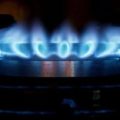The UK government first floated the idea of banning all incandescent light bulbs over a decade ago, but it wasn’t until 1st September 2009 that a European Commission directive put in place a gradual phase-out of all ‘high-energy’ light bulbs.
Over the years since then, all filament and halogen light bulbs have fallen under the remit of the directive (and those that followed), with the exception of non-directional (e.g. GLS, candle) halogen light bulbs, which are due to be phased out by September 2018.
The only exemptions to the ban are ‘special purpose’ light bulbs, such as refrigerator or oven light bulbs. Until recently, this allowed retailers to continue to sell incandescent light bulbs by labelling them as ‘rough service’ light bulbs for industrial use. In 2016, however, another directive was introduced, further classifying rough service and special purpose light bulbs, therefore closing the loophole.
So will incandescent light bulbs make a return after the UK leaves the EU? Will the government roll back the legislation that restricted the use of halogen and filament light bulbs, or will the rapid growth – and falling price – of LED light bulbs mean it’s no longer worth it?
The Falling Price of LED Bulbs
The answer may depend in part on the demand for traditional light bulbs. According to a YouGov poll conducted in March 2017, thirty per cent of those who voted to leave the European Union think incandescent light bulbs should be brought back, as do nine per cent of remain voters.
One of the biggest concerns for consumers has been the price of LED light bulbs. Back in 2009, when the directive was put in place to ban incandescent light bulbs, LED technology was still new to the market, and it was expensive as a result.
Cost is much less of an issue now. Although they have not reached parity with traditional light bulbs, the fall in price of LED light bulbs in recent years has been dramatic. An August 2016 study by CLASP[i] found that the average global price of LED light bulbs has dropped by 67% in the last six years. In the UK, prices dropped by 85% over the same period.
The lower cost and improved energy efficiency of LED light bulbs now means they could pay for themselves in a matter of months, rather than years. For example, if we take a 5W LED GLS light bulb and its equivalent 40W incandescent, factoring in both the cost of the light bulbs and the cost of running them, the LED light bulb would recoup its upfront cost in less than six months (based on an average four hours usage per day).[ii]
| Product | Price of Light Bulb | Hours per kWh | Energy Price (kWh) | Energy Cost After 6 Months | Total Cost |
|---|---|---|---|---|---|
| LED 5W GLS | £5.40 | 200 | £0.19 | £0.68 | £6.08 |
| Incandescent 40W GLS | £1.29 | 25 | £0.19 | £5.47 | £6.76 |
Not only are LED light bulbs more energy efficient, they last many times longer than incandescent light bulbs. In the example above, the rated life of the LED light bulb is 20x that of the incandescent. Once the LED light bulb is fitted, it’s years before it needs to be replaced.
LED vs Incandescent
Another common complaint about energy-saving light bulbs is that they are dimmer and offer a colder light than incandescent light bulbs. Firstly, it’s worth mentioning that the terms ‘energy saving’ and ‘LED’ are not synonymous. While it is true that all LED light bulbs save energy compared to incandescent light bulbs, it is not true that all energy saving light bulbs are LED light bulbs.
For a time, ‘energy saving’ specifically referred to CFL light bulbs (compact fluorescent lamps). These are the type of light bulbs that look like coiled or turned tubes and which can take a few seconds to reach their full light output. While these do save energy, the perception is that they’re not as bright as traditional light bulbs due to the time they take to warm up.
LED light bulbs, on the other hand, warm up instantly, just like incandescent light bulbs. The technology has developed to such a degree that there is a direct LED equivalent (or at least a very close one) for any type of incandescent light bulb. Whether it’s a soft, warm light for the home or a cooler light for workplaces, LED light bulbs are available in colour temperatures to suit any requirement.
The misconception that LED light bulbs are dimmer than their incandescent counterparts may also come from the fact that their wattage is much lower. For years the wattage of a light bulb has been taken as the best indicator of its brightness. A 100W light bulb was always judged to be brighter than a 40W light bulb. This is not the case, however.
As per our example above, a 5W LED light bulb can directly replace a 40W incandescent light bulb. The lower wattage does not mean that the LED light bulb is not as bright; it instead means that it offers the same brightness, but consumes much less power to do so. A light bulb’s brightness is determined by its ‘lumen’ (lm) count; the higher the lumens, the brighter the light that the light bulb emits.
After Brexit, Who Knows?
With the way LED technology has advanced in the last decade, reverting to traditional light bulbs would seem like a significant step backwards. However, if the UK government were to roll back the European Commission directives banning incandescent light bulbs, their reintroduction to the market could slow the growth of LED light bulbs considerably.
Until LED light bulbs reach price parity with incandescent light bulbs (which some industry experts believe is only a matter of time), the cost of them will still be an issue for many consumers. A repeal of the ban on incandescent light bulbs could slow the fall in price of LED light bulbs due to the decreased demand for them, or it could have the opposite effect, driving prices down faster as retailers try to encourage buyers to stick with LED.
The deadline for the UK’s withdrawal from the EU is March 2019. A lot can change between now and then, particularly in the rapidly developing lighting industry. Until the government sets out its intentions regarding incandescent light bulbs, it is difficult to predict exactly how things will stand by then. One thing is certain: all eyes will be on Brussels.
[i] The Collaborative Labelling and Appliance Standards Program, a US-based non-profit organisation that works to improve energy standards around the world
[ii] Prices were correct at the time of publication. See our guide to LED savings for more details





Dimmable led don’t work in my house. Don’t give off heat so have to use heating more and give some people headaches. Let people have choice and not give into controlling eco fanatics!
One problem is that the performance of LED lamps with existing dimmer switches is inferior. Usually jumps between two light levels and that is it. The expensive answer is to change the dimmer for a newer one which works on the falling, not rising, part of the AC waveform. And it is more expensive.
I have been buying incandescent light bulbs on eBay for the last few years for my personal use, but whether it is the quality of these last-remaining bulbs or the electrics in my house, some have blown on the same day I installed them! I decided to swap to halogen only to discover that the EU banned them two years ago (thank God we left!)
I suppose I seem like a luddite on the matter but I genuinely prefer the light; it’s not much of a fair comparison to full-sized light bulbs but this Christmas I could compare an LED to an incandescent candle arch and the superior light of the incandescent was obvious.
Another reason for reintroduction is that most dimming switches available now are incompatible with LEDs and an LED switch is generally over £15. Surely the effect using halogen bulbs may have on the environment is so miniscule compared to the much larger industries, banning them must be a scapegoat rather like peat-based compost. Why should we not have the choice? This is yet another instance of unnecessary interference by the government.
In these situations one has to think outside the box: 24V G4-base halogen lamps are readily available in various wattages, and so are ES-G4 adaptors. This may be a workable solution.
I am a great believer inLED bulbs but my problem is that I use 24volt 60 watt bulbs in machine lamps on several machines.I now find it almost impossible to find these bulbs even in rough service form ,they are also now as expensive as LED bulbs .Is it possible to buy 24 volt Led bulbs or will they be available in the foreseeable future
Hi David, thanks for reading.
Specialist and low voltage LED bulbs like the ones you describe are hard to find at the moment (I’m sorry to say, we don’t stock them on Lightbulbs Direct). At the moment in the UK, bulbs like those are among the few types not covered by the EU ban on incandescents, precisely because there is currently no viable energy-saving alternative for them. A little searching does turn up some low voltage ES GLS bulbs, but not much more than that.
I’m sure it’s only a matter of time before LED technology is adapted for these sorts of applications, but I’m afraid you may continue to find it difficult to find them for now. Sorry not to be of more help.